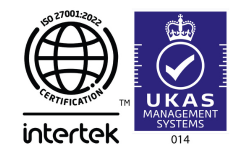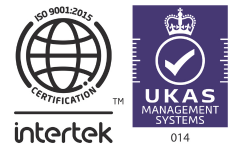Holding on to payslips can end up as one big pile of junk stashed at the back of your wardrobe, or taking up half your gmail storage online. But the main question here, how long should you actually keep your payslips after retirement? Find out more on the importance of payslips prior and after retirement in our article below.













State Pension and retirement
One of the most important steps when planning your retirement is a State Pension forecast. This is an estimate of your total retirement income. Anyone over 18 can get an estimate from www.gov.uk/check-state-pension or if you are over 50, you can request a paper forecast by contacting the Future Pension Centre.
Pensions are the fundamental support needed for retirement. Most people are entitled to some State Pension. State Pension is based on National Insurance (NI) contributions paid or credited during your working life. You can claim State Pension when you reach State Pension age, which is 66 for men and women. From 6 May 2026, the State Pension age starts increasing again and reaches 67 by 6 March 2028. You must have a minimum of ten years contributions. If your State Pension age is before 6 April 2016, you receive a full old State Pension if you were paid or credited with 30 years full NI contributions.
Understanding the Importance of Payslips
Payslips are not just pieces of paper detailing your earnings; they are vital documents that provide a comprehensive record of your employment history and financial transactions with your employer. They typically include details such as gross and net pay, deductions, tax codes, NI and PAYE contributions. Payslips are important when applying for loans and DBI or credit checks so knowing when to shred them up is important. Find out more about payslips here.
*PAYE is the system that collects tax weekly or monthly through the year as you get paid, rather than paying a lump sum at the end of the year as with self-assessment. PAYE codes are instructions given to employers and pension providers as to how much tax to deduct. Find out more information by contacting a payroll provider online today.
Transitioning into retirement: So what changes?
Retirement marks a significant transition in anyone’s life, what we’ve worked up to, the joy of freedom and relaxation after a hard graft. However, retirement is often accompanied by changes in financial priorities and responsibilities.
Some individuals may perceive retirement as a time to declutter and streamline their possessions, overlooking the importance of retaining certain financial documents, such as payslips, which can have implications for future financial planning and compliance requirements.
Retirees may find themselves needing to access payslips for various reasons, including pension assessments, tax filings, or applications for benefits and allowances. Moreover, retaining payslips can offer valuable insights into your financial history, facilitating informed decision-making and budgeting in retirement.
Why is it so important to keep your payslip you may ask? Below we have put together a list of key reasons you may want to hold on to your payslips.
Reasons to keep payslips after retirement:
1. Documenting income sources
Payslips serve as tangible evidence of past income sources, which may be required for verifying eligibility for certain financial products or services post-retirement. You should keep your payslips for at least six years for retirement planning.Whether applying for a mortgage, loan, or insurance policy, retirees may need to provide proof of income to lenders or insurers. Therefore retaining payslips, retirees can substantiate their income history and enhance their credibility when engaging with financial institutions.
2. Clarifying pension entitlements
Pension entitlements are a cornerstone of retirement planning, providing retirees with a source of income to support their post-work life. Pension schemes and entitlements can be daunting, particularly when discrepancies arise. Retaining payslips from previous employers can help retirees verify the accuracy of pension contributions and ensure that they receive the full entitlement to which they are entitled.
3. Providing evidence for benefits and allowances
Retirement often coincides with eligibility for various state benefits and allowances designed to support individuals in their later years. Whether applying for state pension benefits, council tax reductions, or heating allowances, retirees may be required to furnish documentary evidence of their income and employment history. Payslips serve proof of earnings and employment status, facilitating the application process and ensuring that retirees receive the benefits to which they are entitled.
4. Ensuring accuracy in tax returns
Even in retirement, tax obligations persist, albeit in potentially altered forms. Retirees may still be subject to income tax on pensions, investment income, or other sources of revenue. Changes in tax codes or allowances may necessitate adjustments to tax returns filed with HM Revenue & Customs (HMRC). By retaining payslips you can cross-reference income details and tax deductions, ensuring the accuracy and completeness of tax filings.
5. Financial planning and budgeting
Effective financial planning and budgeting are essential to maintain standard of living and meet your financial goals in retirement. Allowing insight to past earnings, expenditure patterns, and savings contributions.
Cloud-Based Payroll Software
Cloud-based payroll software operates by utilising cloud computing technology.
Managed Payroll Services
Opt for a fully managed payroll service by outsourcing the entire payroll process to PayEscape
Integrated HR and Payroll
PayEscape’s integrated HR and payroll software combines powerful HR functionality with robust payroll capabilities.
Need help to understand what solution is best for your business?
Speak with our expert team today on 028 2764 1060
How to organise your payslips ready for retirement
Online vs. physical copies
The choice between maintaining digital or physical copies of payslips is a matter of personal preference and practicality. However digital copies offer the advantage of accessibility and space-saving, allowing you to store and retrieve payslips conveniently on your computers, smartphones, or cloud storage platforms.
However online you could be at risk of cyber threats meaning some individuals opt for physical copies, which offer tangible reassurance and protection against technological malfunctions. Relying on a payroll provider can help you or your businesses pension scheme with compliant data protection and regulations meaning you are covered from any potential threat.
Cloud storage simplifies accessibility and security
Cloud storage platforms provided by payroll and HR offers a secure and efficient means of organising and accessing payslips. There are free cloud storage solutions you can choose alternatively like; Google Drive, Dropbox, or Microsoft OneDrive.
These cloud based storage solutions provide encrypted storage that safeguard sensitive financial information from unauthorised access or loss. By uploading payslips to the cloud, you can enjoy the benefits of remote access, automatic backups, and synchronisation across multiple devices, ensuring the integrity and availability of your financial records are on hand and not at threat of loss if opting for physical copies.
Categorising your payslips
When organising your payslips for retirement, you should adopt a systematic approach and categorise financial records from the past six years. This may involve creating folders for different employers, specific time period, or type of income. By labelling payslips descriptively and consistently, you can streamline the retrieval process and minimise the time and effort required to locate relevant documents when needed.
How to securely dispose of your payslips
While retaining payslips from the past six to ten years is essential for compliance and documentation purposes, you should be mindful of the need to securely dispose of outdated or redundant documents after organising what you want to keep and what you want to get rid of.
Identity theft and fraud are prevalent concerns especially when storing files online, making it imperative to adopt best practices for disposing of confidential financial information. Shredding physical payslips or using secure deletion methods for digital copies can mitigate the risk of unauthorised access and protect yourself from potential security breaches.
Speak to a payroll expert today and organise your retirement payslip data efficiently and securely.
Using our cloud-based software we manage all aspects of your payroll process. From calculating your payroll taxes and filing with HMRC to managing all components of auto enrolment and so much more. Whether it’s reimbursement or pre-tax benefits we’ve got it covered.
Our HR platform lets you manage all aspects of your HR administration. With HR Escape can approve and monitor holiday, record working time and calculate wages, allocate time and staff expenses to clients, projects, and activities, and much more.
Staying compliant and legalities of keeping payslips after retirement
We have covered how long to keep your payslips for retirement, the reason being so and the preparation needed, let’s quickly recap on the important bits and how to stay compliant.
The duration of retaining payslips in the UK: HMRC recommends keeping tax records for at least six years from the 31st January following the end of the tax year to which they relate. You may choose to retain payslips for longer periods, particularly if they anticipate the need to reference them for pension assessments, benefit claims, or legal proceedings.
Compliance with GDPR: In addition to statutory retention periods, you must also adhere to data protection regulations, such as the General Data Protection Regulation (GDPR), which govern the processing and storage of personal data.
Proof of Income: Payslips serve as proof of your income throughout your working life. They may be required for various purposes, such as applying for loans, mortgages, or even renting a property.
Tax purposes: In retirement, you still need to file taxes. Your payslips can provide essential information for completing your tax return accurately, especially if you have income from multiple sources.
Pension claims: Your pension provider may require proof of your earnings history when processing your pension claims. Payslips serve as evidence of your income and contributions, ensuring you receive the correct pension entitlement.
Benefit entitlements: If you’re eligible for certain benefits in retirement, your payslips may be required to assess your entitlement. They can help authorities calculate your benefits accurately.
What to do when an employee reaches State Pension age
We hope this guide has helped you realise the importance of keeping payslips after retirement and how long to keep them. Find out more about updating your payroll records if you or an employee reaches State Pension age to stop paying National Insurance, speak to a Payroll and HR provider online today and see how we can help save time, and hassle whilst staying compliant with HMRC. If you have any questions regarding payslips, payroll codes or retirement get in touch with PayEscape here.
Book your free demo now.
Need help to understand what solution is best for your business? Speak with our expert team today on 028 2764 1060
"*" indicates required fields



















